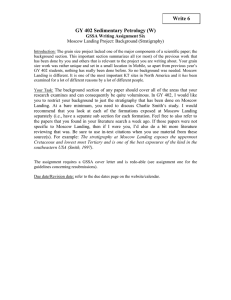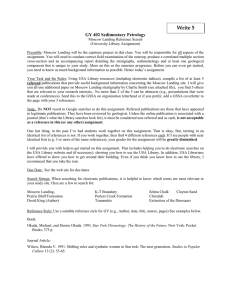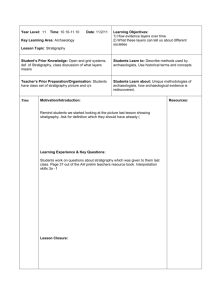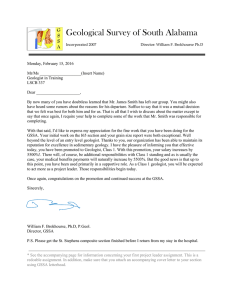Geological Survey of South Alabama Major 3
advertisement
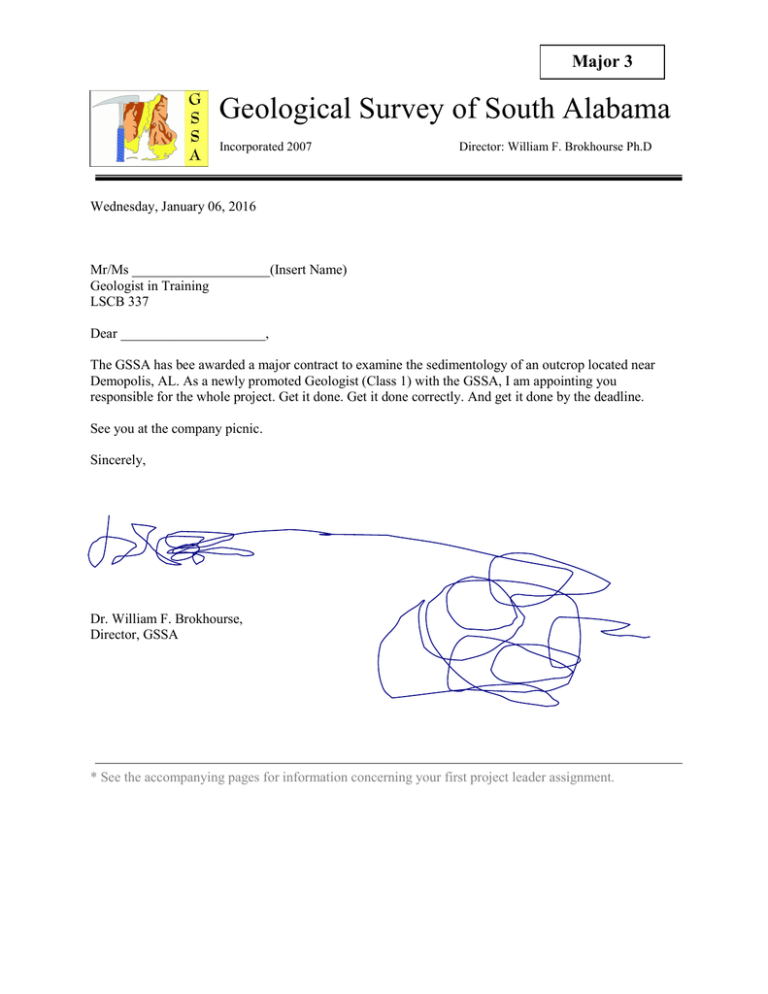
Major 3 Geological Survey of South Alabama Incorporated 2007 Director: William F. Brokhourse Ph.D Wednesday, January 06, 2016 Mr/Ms ____________________(Insert Name) Geologist in Training LSCB 337 Dear _____________________, The GSSA has bee awarded a major contract to examine the sedimentology of an outcrop located near Demopolis, AL. As a newly promoted Geologist (Class 1) with the GSSA, I am appointing you responsible for the whole project. Get it done. Get it done correctly. And get it done by the deadline. See you at the company picnic. Sincerely, Dr. William F. Brokhourse, Director, GSSA * See the accompanying pages for information concerning your first project leader assignment. Major 3 GY 402: Sedimentary Petrology Independent Research Project: Advise and Guidelines The Project: This is the third and final major project that you will do in GY 402. It is meant to be a compilation exercise; one that requires you to draw on all of your experiences in the class in order to finish it. In format and layout, it should follow the grain size project that you did earlier in the course. The sedimentary section should follow the format that you did for the Scarborough School section exercise, but this time, you will have to deal with a minimum of 5 sections. Refer to all of your previous exercises (and the comments that I put on them) to help you with this project. 1) Sedimentary Sections: During the St. Stephens Quarry or Moscow Landing field trip, each of you will be responsible for examining 5+ separate sections. Using the data that you record in your note book, produce a correlation diagram drawn to scale. You may use any paper size you wish, but the best size (in my opinion) is around 2' by 3'. Use the "stratigraphy" roll at the back of 337 for your paper supply. Vertical positioning of your sections should be tied into the a specific marker/datum (e.g., the ”Gryphea” layer that you should have identified in each section at Moscow Landing). Horizontal positioning should be done according to the pacing that you did during the final stage of your field work. In addition to a legend, horizontal and vertical scale bars, grain size scale, title and your name, be sure to add a small location map and a stratigraphic nomenclature column. This was not absolutely necessary at Scarborough School because we worked over a narrow area, but the St. Stephens Quarry/Moscow Landing sites cover much more terrain. Seek help from Doug before you get too far into your diagram. 2) The Written Report: As with the grain size project, your written report should follow a standard format. The items in the list below that are in bold text are new additions or significantly modified sections that are required for this report. Unless otherwise stated, use the guidelines that I provided to you for the grain size report for the components that are not in bold text. Title Page (1 full page) Abstract (1/2 page) Introduction (1/2 page: state the purpose of your project) Stratigraphy (Background) (2 to 3 pages, 1 or 2 figures) Methodology (½ to 1 page) Results (1 page; includes your sedimentary sections correlation figure) Discussion (3 to 5 pages) Conclusions (1 page) References (? pages) Stratigraphy (Background): The stratigraphy section should briefly summarize as much as possible of the previous stratigraphic work that has been done on the outcrops. At a bare minimum, you need to discuss Charlie Smith’s Upper Cretaceous-Lower Tertiary stratigraphy for Moscow Landing and the lower Tertiary stratigraphy exposed at St. Stephens Quarry. Use no less than five references… perhaps the ones you found during the lit review exercise. In particular, outline the composition of the major formations of the study site. If I were you, I’d also do a bit more literature reviewing to find as many references as possible pertaining to your individual research project. Include any relevant figures from these sources, but be sure to reference them correctly. Methodology: In your grain size report, it is necessary to outline your lab methods. This time, it's your field methodology that needs to be briefly outlined. Discuss how you chose your section locations, how you measured them, what data you recorded etc. If you did additional work (e.g., collected samples for paleontology assessment, or for thin sectioning, or if you measured additional fault stuff, explain how and why you did it. Results: Refer to your correlation diagram and outline any interesting things that you found (fossils, faults etc). Discussion: The discussion in this project is likely to be longer than it was in the grain size project simply because you saw more stuff and hopefully, observed more interesting sedimentary features. You have full freedom to go in any direction that you wish, but beware that a good chunk of your evaluation will come from this part of the project. Impress me somehow. Each of you will be expected to develop a stand-alone separate “research” component. The assignment requires a GSSA cover letter. Due date: refer to the due dates page on the website/calendar. Please note. I will look over your projects before the due date on a first come, first serve basis, but given the late due date for this assignment, this exercise is NOT re-doable.
